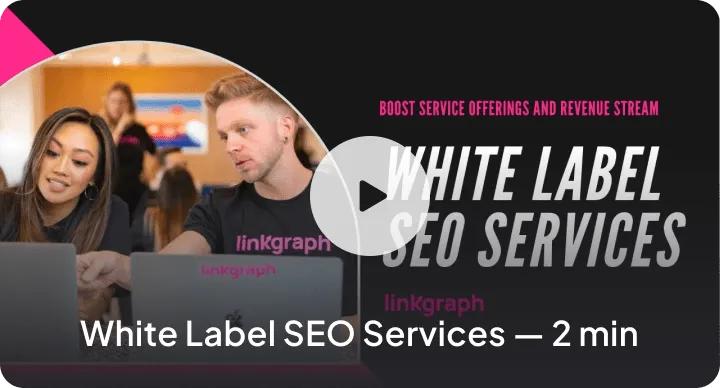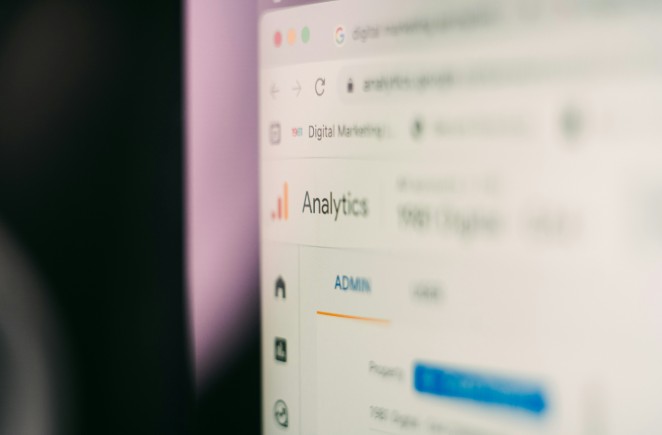How to Use PPC Data for SEO: Boost Your Website’s Organic Performance
Learning how to use PPC data for SEO can transform a business’s visibility in today’s online landscape. While Pay-Per-Click advertising and search engine optimization are often treated […]
Learning how to use PPC data for SEO can transform a business’s visibility in today’s online landscape. While Pay-Per-Click advertising and search engine optimization are often treated as separate strategies, savvy marketers know that combining their strengths can lead to extraordinary results.
For instance, PPC campaigns generate a wealth of real-time data, from keywords and audience behaviors to conversion insights. All of them can support and guide your SEO efforts. However, if analyzing endless datasets feels overwhelming, rest assured—the insights here are set to streamline your approach, leading to a comprehensive and actionable digital marketing strategy.
Ready to boost your organic performance with SEO and PPC integration? Let’s dive in!
Key Takeaways
- Integrating SEO and PPC strategies enhances visibility and brand reach
- Data from PPC campaigns can refine SEO efforts and content creation
- Avoid keyword cannibalization for better SEO and PPC synergy
- Continuous analysis and adjustment are key for balanced SEO and PPC results
- Collaboration across teams is essential for coherent digital marketing campaigns
Understanding the Integration of SEO and PPC in Digital Marketing
Before you understand how to use PPC data for SEO, you must comprehend what each of these concepts means. Search engine optimization, or SEO, involves optimizing web content to increase a site’s visibility in organic search engine results. It prioritizes factors like keyword relevance and site structure.
On the flip side, Pay-Per-Click, known as PPC, focuses on the advertising aspect, where businesses pay a fee each time their adverts are clicked. This is typically done using platforms such as Google Ads.
These ads often direct potential customers to a well-crafted landing page designed to convert visits into sales. Together, SEO and PPC harness analytics to refine copywriting and strengthen a brand’s online presence, meeting the audience’s search inquiries with precision.
The synergy between these approaches can help bolster market presence and fortify brand visibility. For example, the data generated from both fronts offers businesses a comprehensive understanding of their digital performance across multiple channels, supporting informed decision-making and yielding better return on investment (ROI).
How to use PPC Data for SEO Strategies?
The concerted implementation of SEO and PPC campaigns has the power to improve a company’s placement on the search engine results page (SERP). Integration ensures that both organic reach and paid initiatives work synergistically to improve online visibility.
While SEO supports long-term growth through keyword research and content creation, PPC offers immediate returns on investment through targeted advertising, allowing for real-time budget adjustments. Together, these strategies provide a dual-layered foundation, making sure a business maintains constant visibility to its desired audience.
Learn how to use PPC data for SEO and leverage the insights to enhance strategies.
1. Identifying High-Converting Keywords From PPC Campaigns
Insights from Pay-Per-Click campaigns are a treasure trove for improving SEO and content marketing efforts. Data on high-converting keywords is particularly valuable.
This is possible because PPC campaigns provide instant feedback on keyword performance—something SEO, which takes longer to yield results, struggles to offer.
Therefore, when marketers analyze which keywords drive the most conversions in PPC, they can align their SEO content with proven user intent.
In the long run, this enhances user experience and bolsters the return on investment. However, these keywords must be integrated seamlessly, guided by the search engine’s algorithm, to ensure that the information provided aligns with what users are actively seeking.
2. Using PPC Ad Performance to Inform SEO Content Creation
The ad copy that performs well in PPC campaigns generally offers valuable clues about the language, tone, and messaging that resonate with your audience. Data from Pay-Per-Click efforts highlights which ads yield a better quality score and higher relevance, enabling the development of content that resonates with the target audience and reduces overall cost per acquisition.
By critically analyzing PPC ad performance, marketers can unlock insights into consumer behavior and keyword effectiveness that are instrumental in creating high-quality SEO content. You can use these insights to craft compelling meta descriptions, headlines, blog posts, and on-page content for SEO.
Moreover, understanding the performance of long-tail keywords within PPC campaigns enables the creation of SEO content specifically tailored to address those search queries. Your content team can then make your organic listings just as enticing as your paid ads, satisfying user intent and potentially improving organic search rankings.
3. Analyzing PPC User Behavior for Strategy Optimization
Analyzing user interactions from Pay-Per-Click campaigns can yield valuable insights that enhance SEO optimization efforts. PPC data might reveal not just what people search for but also why they search for it.
For example, click-through rates (CTR) and conversion data from your PPC campaigns can help you uncover user intent, whether it’s informational, navigational, or transactional. Also, understanding which ads lead to clicks and actual revenue informs content marketing strategies.
This knowledge allows for the refinement of a website’s user experience, ensuring that users find what they need and thus improving site metrics and SEO performance. With this information, you can also create SEO content that better addresses your audience’s needs and expectations.
4. Reducing Bounce Rates With PPC Data Insights
Extracting insights from a PPC campaign can significantly reduce your website’s bounce rate, providing that the data guides content relevancy. For instance, if Google Ads are experiencing high engagement, it indicates that users find these specific ads valuable.
Transferring these lessons to SEO campaigns can enhance the synergy between the organic content and users’ interests. This will help keep visitors engaged on the site longer and possibly improve search rankings, as these are relevant metrics for search engines like Google.
Combining SEO and PPC Ads for Creating a Unified Keyword Strategy
You probably already know that SEO and digital marketing success hinges on a well-crafted keyword strategy, right? If it harmonizes the insights from both content work and PPC campaigns, the results can be even better.
Understanding how to use PPC data for SEO and to merge keyword lists ensures a comprehensive approach to organic and paid search results. Together, these two powerful approaches provide deeper insights into user behavior and enable smarter keyword targeting across both channels.
Merge PPC and SEO Keyword Lists
PPC campaigns generate data on keywords that drive clicks and conversions, while SEO focuses on long-term ranking performance. Merging both lists is an essential step in building a cohesive digital marketing strategy.
By syncing the high-performance keywords from PPC advertising with the organic focus of local SEO, you arm yourself with a powerful tool for optimizing your online presence. This strategy enhances Google Ads search efforts and streamlines content across campaigns, ensuring consistent messaging and maximizing audience engagement.
Consider the scenario where a marketer identifies a set of keywords driving conversions in PPC campaigns; integrating these into SEO efforts can significantly bolster local SEO efforts and search engine rankings.
The data from PPC and SEO should not exist in silos but as parts of a cohesive whole. This integration is critical in making informed decisions about resource allocation and ensuring that both PPC and SEO efforts are working harmoniously towards the same goals.
Prioritize Keywords Based on Conversion Metrics
Prioritizing keywords based on conversion metrics is a pivotal element in integrating SEO and PPC strategies for effective reputation management and lead generation. For instance, by analyzing which keywords lead to a higher conversion rate, businesses can focus their efforts on these terms to enhance credibility and improve search visibility.
This targeted approach helps marketers allocate resources efficiently, ensuring that the message reaches the most relevant audience to drive sales and bolster the brand’s online standing. In this area, here’s how to use PPC data for SEO purposes:
- Analyze conversion data to identify top-performing keywords that align with business objectives.
- Refine SEO content and PPC campaigns to focus on these high-impact keywords for optimal lead generation.
- Regularly review performance metrics to adjust keyword priorities in response to changing trends and consumer behavior.
Avoid Keyword Cannibalization Between SEO and PPC
Keyword cannibalization happens when multiple pages on a website are optimized for the same keyword or phrase. To prevent it between SEO and PPC efforts, you must structure strategies carefully.
It might be natural for overlap to occur when both strategies aim for visibility. However, managing your keyword targeting can ensure that SEO and PPC complement each other rather than compete.
Utilizing tools like the Google Search Console, Google Analytics, and comprehensive dashboards, you can monitor the performance of specific URLs and keywords to maintain a cohesive strategy.
By ensuring that their PPC ads and SEO efforts target complementary, rather than identical, keywords, businesses can avoid internal competition for rankings and enhance their visibility across search engines.
Good practices on how to use PPC data for SEO and avoid keyword cannibalization include:
- Analyze search terms to pinpoint overlaps between PPC and SEO keywords.
- Adjust the focus of PPC advertisements and search engine optimization efforts to emphasize unique, complementary keywords.
- Continually refine the website’s design and content structure, utilizing URL-specific data to inform changes that drive improvement in conversion rates.
Utilizing Negative Keywords to Improve Campaign Efficiency
In the realm of digital marketing and online advertising, negative keywords are specific terms or phrases that you can add to your campaigns to prevent your ads from being shown to users who search for those particular queries. Essentially, they act as filters.
By flagging terms unrelated to a brand’s offerings, marketers effectively redirect their focus to attracting qualified traffic, safeguarding their budget from being spent on clicks that do not convert.
This streamlined approach commands the attention of an engaged audience, fine-tuning Ad campaigns to resonate more deeply with consumers’ search intentions and enhancing overall campaign efficiency.
How to Enhance Content Marketing With Integrated SEO and PPC Data?
We’ve already shown you that content marketing is one of the most relevant areas when learning how to use PPC data for SEO. But this topic is so important that we need to explore it further.
This section will delve into the practical methods for harnessing PPC insights to strengthen content marketing initiatives.
1. Craft Content That Appeals to Paid and Organic Audiences
Creating content that caters to both paid and organic search audiences is interesting for minimizing the customer acquisition cost and amplifying reach. Typically, organic audiences search for informational content or solutions to their problems. They often engage with blog posts, guides, and in-depth resources.
On the other hand, paid audiences tend to have higher intent and are often looking for products, services, or actionable solutions quickly. To align the content creation, you might address both informational and transactional intents in your content.
Also, use PPC ad copy insights to refine your SEO-focused titles and meta descriptions, ensuring they are engaging and optimized for click-throughs. These practices, grounded in data, reduce guesswork and facilitate consistent messaging across platforms, creating a seamless user experience for potential leads.
2. Identify Content Gaps Through PPC Queries
Search query reports from PPC campaigns reveal user searches that triggered your ads. Identifying content gaps through them enables you to leverage actual consumer search behaviors to optimize the conversion funnel on the website.
For instance, if you pinpoint the queries that drive PPC traffic but do not have corresponding rich content on the site, you can discover new opportunities for content development that might generate brand awareness and climb the rankings.
This targeted approach ensures that every resource is invested wisely, building informative pathways that cater directly to consumer interests and guide them smoothly toward engagement and conversion.
3. Optimize Landing Pages for SEO and PPC Conversions
Optimizing landing pages for both SEO and paid ads conversions is important in a successful content strategy. These pages should cater to local search patterns and include elements informed by feedback and data analytics.
Creating landing pages that effectively guide users through their journey from awareness to conversion requires careful construction of the elements included within each page. To ensure a seamless transition through the various stages of the funnel, consider the following:
- Embed local search terms contextually to connect with the audience’s geographical preferences.
- Structure the content strategy with clear, concise calls to action that direct users toward intended outcomes.
- Implement feedback loops to continuously refine the user experience based on actual user interactions and preferences.
Measuring Success: Analytics and Reporting for SEO and PPC
Reaching this point of our content, you already know more about how to use PPC data for SEO, right? In addition to that, the ability to measure the success of integrated SEO and PPC initiatives is critical for any company invested in improving its online reputation.
Setting Up Integrated Tracking Systems
To truly harness the power of digital marketing, your business must establish integrated tracking systems that consolidate data from both SEO and PPC channels. This unified approach enables the accurate measurement of campaign performance, illuminates user behaviors, and permits clearer attribution of conversions.
An integrated system should be comprehensive, capturing various metrics, such as click-through rates, conversion rates, and time on page, to give actionable insights. A siloed approach to reporting can lead to missed opportunities. Integrate SEO and PPC data to get a holistic view of your campaigns.
Interpreting Combined Data for Actionable Insights
Interpreting combined data from SEO and PPC campaigns offers marketers a panoramic view of their digital marketing effectiveness. By analyzing the convergence of these datasets, businesses can uncover nuanced insights into consumer behavior and attribute conversions to the most influential touchpoints.
This integrated analysis arms companies with the knowledge to craft strategic adjustments that enhance online visibility, drive targeted traffic, and optimize conversion rates with greater precision.
Through continuous monitoring, data-driven decisions, and iterative improvements, your SEO and PPC strategies can succeed individually and amplify each other’s effectiveness, driving greater results for your business.
Adjusting Strategies Based on Performance Metrics
Reporting isn’t just about showcasing success—it’s a tool for continuous improvement. This means you should use insights from your analytics to refine your strategy. Adjusting approaches based on performance metrics is fundamental for achieving a harmonious balance between SEO and PPC efforts in digital marketing.
By continuously monitoring key metrics such as conversion rates, click-through rates, and quality scores, businesses can pinpoint where adjustments may be necessary. Through the tactical refinement of campaigns based on these performance indicators, you can improve the company’s ROI and ensure the marketing strategies evolve in alignment with consumer behavior and search engine algorithms.
Best Practices for SEO and PPC Integration
After learning how to use PPC data for SEO, implementing best practices for integrating both fronts is vital to maximizing the effectiveness of digital marketing campaigns. Check out some of the best practices to adopt.
Collaborating Across Teams for Cohesive Campaigns
Before diving into integration, it’s essential to define shared objectives for your SEO and PPC strategies. Collaborating across various teams optimizes the culmination of SEO and PPC efforts, enabling coherent campaigns that resonate with both organic search users and those reached through paid advertising.
When departments such as content creation, analytics, and advertising all work in tandem, the resulting strategic synergy enhances the efficacy of digital marketing campaigns and fosters a dynamic that adapts to real-time data insights.
This collaborative approach considers the multifaceted nature of digital consumer interactions and tailors the online experience to seamlessly integrate with the user’s quest for information and decision-making processes.
Testing and Refining Integrated Marketing Efforts
Continual testing and refining are essential in the integration of SEO and PPC, allowing businesses to calibrate their marketing efforts for optimal performance. By analyzing the interplay of organic search results and paid advertisements, you can implement A/B testing to determine the most effective strategies.
This practice signifies a company’s commitment to adaptability and precision in addressing the evolving landscape of digital consumer behavior. For example, PPC campaigns provide quick feedback on what resonates with your audience, offering valuable insights for SEO strategies.
Staying Updated With Industry Trends and Algorithm Changes
Staying abreast of industry trends and search engine algorithm changes is crucial for effective SEO and PPC integration within digital marketing. Search engines often update their algorithms, impacting how ads and content rank.
By continuously adapting to these updates, digital marketers can refine their SEO content and PPC strategies, ensuring sustained success in a highly competitive online marketplace. Remember, the ultimate goal is to create a seamless experience for your audience while maximizing the efficiency and ROI of your digital marketing efforts.
Frequently Asked Questions
How does combining SEO and PPC benefit my digital marketing?
Learning how to use PPC data for SEO enhances visibility, increases traffic instantly through paid ads while building organic rankings, and provides valuable keyword data for cross-channel optimization.
Can PPC data really improve my SEO strategies?
Absolutely, PPC campaigns reveal valuable keyword insights and consumer behavior trends, which inform and refine SEO strategy for better organic search results and user engagement.
What’s involved in creating a unified keyword strategy?
A unified keyword strategy necessitates identifying target keywords, analyzing search volume and competition, and integrating them cohesively across website content to strengthen SEO and improve search rankings.
How can I use SEO and PPC data to boost content marketing?
Leveraging SEO and PPC data sharpens content marketing by highlighting high-performing keywords, understanding audience behavior, and identifying successful topics, thus guiding strategy to meet user needs and elevate online visibility.
What metrics should I track for integrated SEO and PPC campaigns?
For integrated SEO and PPC campaigns, focus on tracking website traffic, conversion rates, click-through rates (CTR), cost per conversion, keyword performance, and return on ad spend (ROAS) for a comprehensive view of campaign effectiveness.
Take Your SEO to the Next Level with LinkGraph
Integrating SEO and PPC strategies is a powerful way to maximize a brand’s digital marketing efforts and ensure a comprehensive approach to online visibility and engagement. By leveraging the data insights gained from PPC campaigns, marketers can fine-tune their SEO tactics, aligning them with consumer behavior and improving organic search results.
But to get even better results, you can count on our award-winning SEO services. With our solutions and software, like Search Atlas, you can scale your performance. Book a meeting with us.










